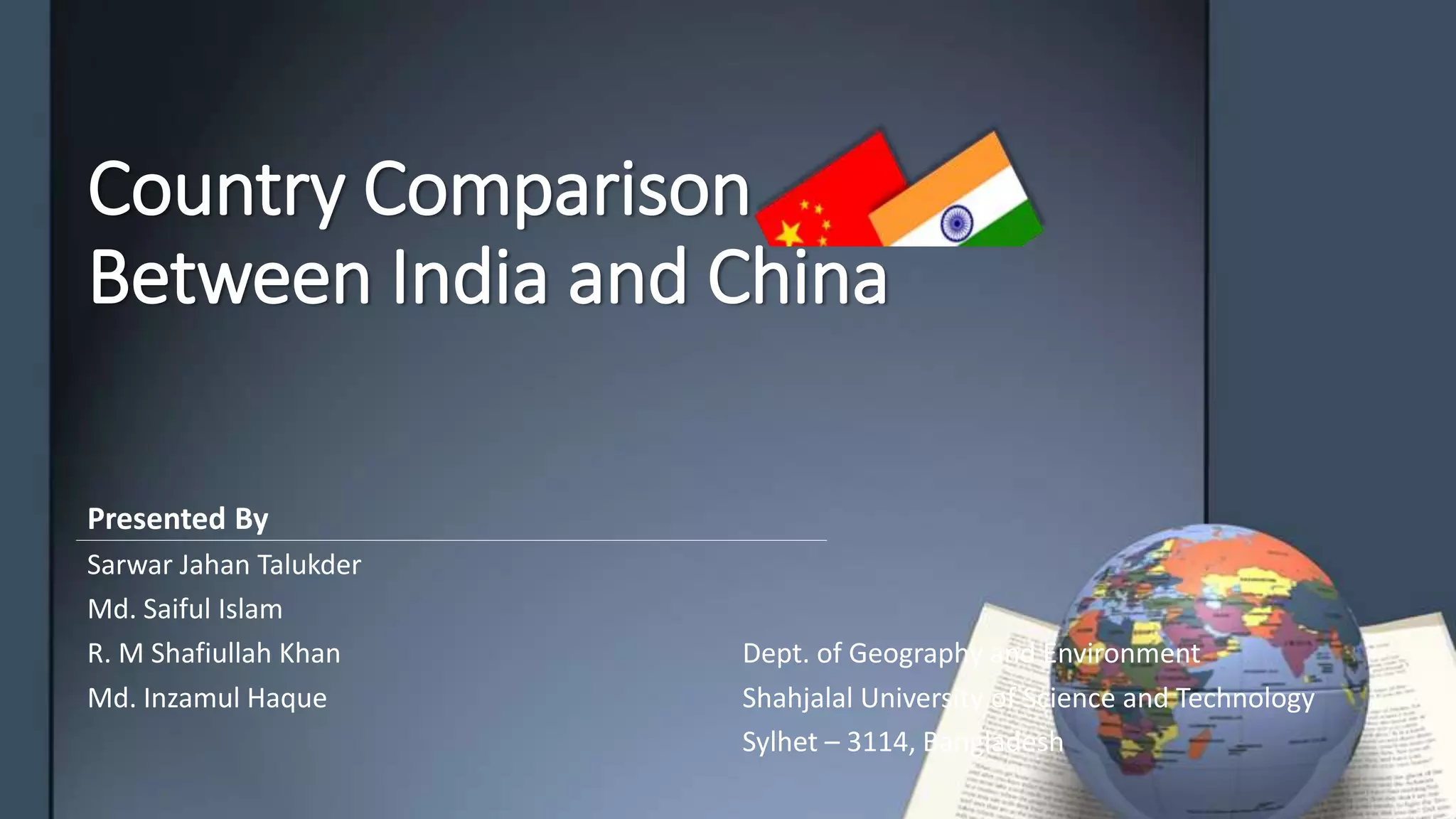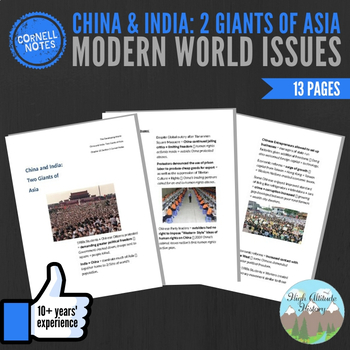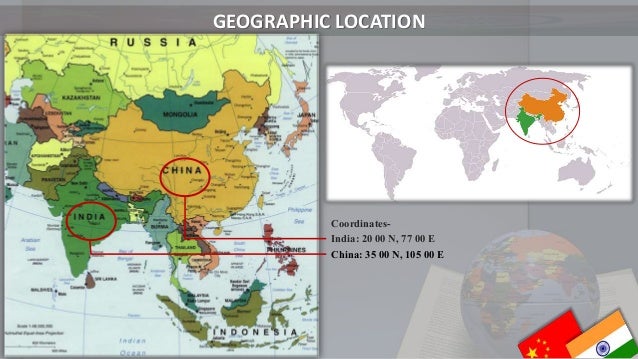A Comparative Geography of China and India: Exploring Two Giants in Asia
Related Articles: A Comparative Geography of China and India: Exploring Two Giants in Asia
Introduction
In this auspicious occasion, we are delighted to delve into the intriguing topic related to A Comparative Geography of China and India: Exploring Two Giants in Asia. Let’s weave interesting information and offer fresh perspectives to the readers.
Table of Content
A Comparative Geography of China and India: Exploring Two Giants in Asia

China and India, the two most populous nations on Earth, stand as giants in Asia, their vast territories and intricate geographies shaping their histories, cultures, and destinies. While both nations share the continent’s continental landmass, their distinct geographical features and contrasting landscapes create unique challenges and opportunities. This article delves into the geographical characteristics of China and India, highlighting their similarities and differences, and examining the implications of their respective landscapes on their development and global influence.
China: A Land of Diverse Terrain and Rich Resources
China, with its expansive territory of approximately 9.597 million square kilometers, is the world’s third-largest country by land area. Its vast geographical expanse encompasses a diverse range of landscapes, from towering mountains and fertile plains to arid deserts and verdant forests.
- The Tibetan Plateau: This high-altitude plateau, often referred to as "the roof of the world," dominates western China. It is home to the source of major Asian rivers, including the Yangtze, Yellow, and Mekong, and its rugged terrain presents both challenges and opportunities for development.
- The Eastern Plains: The eastern portion of China is characterized by expansive plains, including the North China Plain and the Sichuan Basin. These fertile areas have traditionally been the heartland of Chinese agriculture and population density.
- Mountain Ranges: China is home to numerous mountain ranges, including the Himalayas in the southwest, the Tian Shan in the northwest, and the Qinling Mountains in the central region. These mountain ranges act as natural barriers, influencing weather patterns and human settlement.
- Coastal Regions: China’s extensive coastline, stretching over 18,000 kilometers, provides access to the Pacific Ocean and numerous important seaports. This coastal region is a hub of economic activity, with major cities like Shanghai and Guangzhou playing pivotal roles in international trade.
- Rivers and Lakes: China’s vast river system, including the Yangtze and Yellow Rivers, has historically been crucial for irrigation, transportation, and economic development. Major lakes like Poyang Lake and Dongting Lake contribute to the country’s rich biodiversity and water resources.
China’s diverse geography has played a significant role in shaping its history and culture. The mountainous terrain has historically served as a natural barrier, limiting foreign influence and fostering a distinct Chinese identity. The fertile plains have supported a large agricultural population, contributing to China’s long history of civilization. The abundant natural resources, including coal, iron ore, and oil, have fueled its rapid economic growth in recent decades.
India: A Subcontinent of Diverse Landscapes and Rich Cultural Heritage
India, with an area of approximately 3.287 million square kilometers, is the seventh-largest country in the world by land area. It is often referred to as a subcontinent due to its distinct geographical features and the diversity of its landscapes.
- The Himalayas: The towering Himalayas, forming the northern border of India, are home to the world’s highest peaks, including Mount Everest. These mountains act as a natural barrier, influencing weather patterns and shaping the cultural landscape of the region.
- The Indo-Gangetic Plain: This vast, fertile plain, extending across northern India, is the heartland of Indian agriculture and population density. The Ganges River and its tributaries play a crucial role in irrigating this fertile land.
- The Deccan Plateau: This triangular plateau, occupying the southern portion of India, is characterized by its dry climate and undulating terrain. The plateau is home to numerous ancient cities and historical sites, showcasing India’s rich cultural heritage.
- Coastal Regions: India’s extensive coastline, stretching over 7,500 kilometers, provides access to the Indian Ocean and numerous important seaports. This coastal region is a hub of economic activity, with major cities like Mumbai and Chennai playing pivotal roles in international trade.
- Deserts and Forests: India is home to diverse ecosystems, including the Thar Desert in the northwest and the Western Ghats rainforest in the southwest. These regions contribute to the country’s rich biodiversity and play a significant role in regulating the climate.
India’s diverse geography has played a significant role in shaping its history, culture, and development. The Himalayas have served as a natural barrier, protecting India from external invasions. The Indo-Gangetic Plain has been the cradle of ancient Indian civilizations, fostering the development of agriculture and urban centers. The Deccan Plateau has been home to diverse cultural traditions and empires, contributing to India’s rich tapestry of languages, religions, and art forms.
Comparative Analysis: Similarities and Differences
While both China and India boast vast territories and diverse landscapes, their geographical characteristics also reveal distinct differences.
- Mountain Ranges: Both nations share the Himalayas as a defining geographical feature, but their mountainous terrain extends differently. China’s mountains are more extensive, forming natural barriers across its vast territory. India’s Himalayas are more concentrated, forming a natural border with Nepal and Bhutan.
- Rivers and Water Resources: Both nations are blessed with major river systems, but their distribution and utilization differ. China’s Yangtze and Yellow Rivers are longer and carry larger volumes of water, facilitating irrigation and transportation. India’s Ganges River, while crucial for agriculture, faces challenges of pollution and water scarcity.
- Coastal Regions: Both nations have extensive coastlines, but their geographic positioning and access to sea routes vary. China’s coastline faces the Pacific Ocean, providing access to key maritime trade routes. India’s coastline faces the Indian Ocean, offering strategic access to the Middle East and Africa.
- Climate and Weather Patterns: Both nations experience diverse climates, but their monsoon patterns differ. China’s climate is influenced by the East Asian monsoon, resulting in distinct wet and dry seasons. India’s climate is dominated by the South Asian monsoon, bringing heavy rainfall during the summer months.
The Significance of Geography for Development and Global Influence
The geography of China and India has profoundly shaped their development trajectories and global influence. Their vast territories and diverse landscapes have provided both opportunities and challenges.
- Economic Development: Both nations have leveraged their natural resources and geographic advantages to drive economic growth. China’s abundant coal reserves and vast arable land have fueled its industrialization. India’s diverse agricultural production and strategic location have contributed to its economic growth.
- Global Influence: Both nations have used their geographic position and economic strength to exert global influence. China’s strategic location in East Asia and its growing economic power have made it a key player in regional and global affairs. India’s strategic position in South Asia and its growing economy have given it increasing influence in the region.
- Environmental Challenges: Both nations face significant environmental challenges due to their vast populations and rapid industrialization. China’s air pollution and water scarcity are major concerns. India’s deforestation and water pollution pose significant threats to its environment and public health.
FAQs
Q: What are the major geographic differences between China and India?
A: While both nations are vast and diverse, key differences include:
- Mountain Ranges: China’s mountains are more extensive, while India’s Himalayas are more concentrated.
- Rivers: China’s rivers are longer and carry larger volumes of water, while India’s Ganges faces pollution and scarcity.
- Coastal Regions: China’s coastline faces the Pacific Ocean, while India’s faces the Indian Ocean, offering different strategic access.
- Climate: China’s climate is influenced by the East Asian monsoon, while India’s is dominated by the South Asian monsoon.
Q: How does geography impact economic development in China and India?
A: Geography plays a significant role:
- China: Abundant resources like coal and fertile land have fueled industrialization.
- India: Diverse agriculture and strategic location contribute to economic growth.
Q: What are the major environmental challenges faced by China and India?
A: Both nations face significant challenges:
- China: Air pollution and water scarcity.
- India: Deforestation and water pollution.
Tips
- Understanding the geography of China and India is crucial for appreciating their historical, cultural, and economic dynamics.
- Consider the impact of specific geographical features on the development of each nation.
- Analyze the challenges and opportunities presented by their respective landscapes.
- Explore the relationship between geography and global influence.
Conclusion
The geographical characteristics of China and India are essential factors in understanding their respective histories, cultures, and development trajectories. Their vast territories, diverse landscapes, and strategic locations have shaped their destinies and continue to play a pivotal role in their global influence. As these two giants continue to grow and evolve, their geographical features will remain crucial factors in their economic development, environmental sustainability, and global standing.








Closure
Thus, we hope this article has provided valuable insights into A Comparative Geography of China and India: Exploring Two Giants in Asia. We hope you find this article informative and beneficial. See you in our next article!